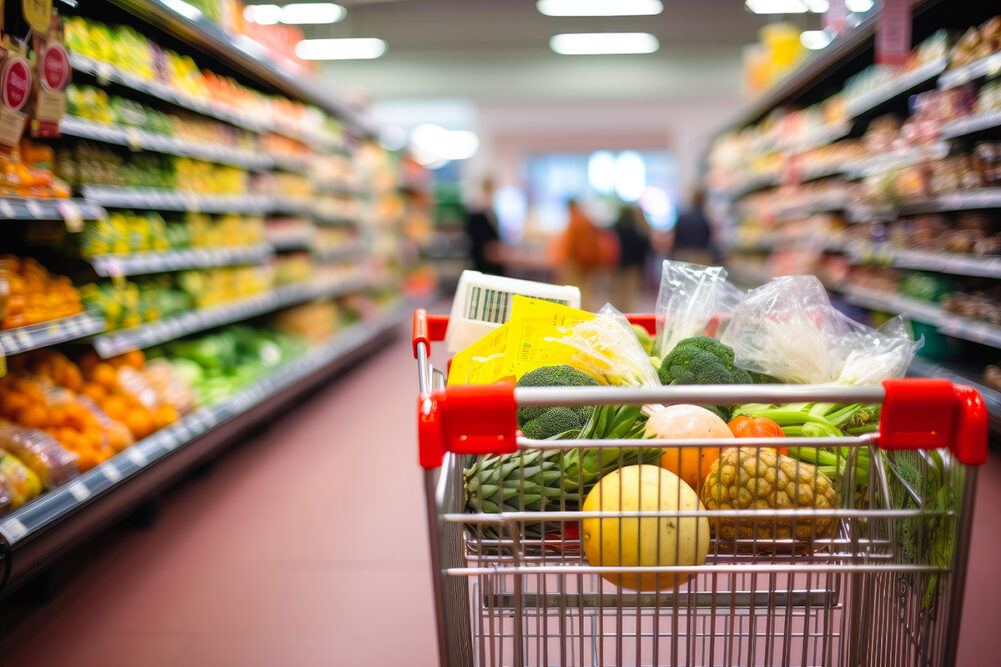CHICAGO — Grocery shoppers have prioritized product transparency at an increased rate over the past five years, according to research presented at The Center for Food Integrity (CFI) Transparency Summit 2023, held in Rosemont, Ill., on Nov. 14-15. These current consumer insights on transparency come from the fourth report in a series from FMI-The Food Industry Association, Arlington, Va., and NIQ (formerly NielsenIQ), Chicago.
The FMI/NIQ Transparency Trends 2023 report found the proportion of grocery shoppers saying transparency is important increased seven percentage points from 2018 to 2023 (69% and 76%, respectively). The study explored shoppers’ perspectives on topics such as front-of-pack labels, use of digital research tools and attitudes about online versus in-store shopping.
“Consumers’ savviness about ingredients has really changed,” said Sherry Frey, vice president of total wellness for NIQ. In fact, “complete list of ingredients” was the No. 1 factor identified by shoppers when determining if a brand or manufacturer is being transparent.
Mickie French, executive director of the CFI, added, “(They understand) it’s not realistic to buy a product (free of functional ingredients) and not have to eat it the same day.”
Today’s shoppers understand that ingredients serve a function. They want to know that function. The research also showed they want to know how ingredients are sourced and a company’s sustainability practices.
“Consumers want companies to take more responsibility with sustainability,” said Laurie Demeritt, owner and chief executive officer of The Hartman Group, Bellevue, Wash. “There is a growing consumer demand for companies to not only set ambitious sustainability objectives but also to clearly articulate the strategies and actions they are taking to achieve them.
“Companies are not expected to be ‘perfect,’ in this space immediately,” Ms. Demeritt said. “But, instead to take consumers on their journey. Like consumers’ own journeys with these issues, sharing milestones, metrics and measurements provides accountability and demonstrates that progress is in motion.”
Steve Markenson, vice president-research and insights at FMI, said, “The path to trust is transparency.”
Target Corp., Minneapolis, does this on its Good & Gather All Natural Deli Slices. The oven-roasted turkey breast slices, for example, state on front panels: “no nitrates or nitrites added,” with a footnote explaining “except those naturally occurring in celery powder and sea salt.” Both are listed on the ingredient statement, along with vinegar. Front panels also state “no artificial flavors or preservatives,” with the ingredient statement including a footnote following vinegar, celery powder and sea salt that reads “to preserve quality.”
The messages communicate to shoppers the ingredients not only keep the food safe, but they also may assist with reducing food waste. Numerous studies show consumers are actively trying to purchase products formulated to reduce food waste. As a result, the effort includes an evolving acceptance of ingredient technologies, including antioxidants and antimicrobials. Transparency and communication about the role of an ingredient may help gain consumer trust and acceptance.
Hormel Foods, Austin, Minn., takes transparency to a higher level by flagging that its Applegate Naturals Oven Roasted Turkey Breast comes from animals “humanely raised” and the brand’s mission is “changing the meat we eat.” The footnote goes as far as describing the animal’s diet.
“The level of discernment consumers are taking with the products they are purchasing has continued to increase, even during the lingering inflationary times,” Ms. Frey said.
She explained that NIQ has seen a steady uptick of claims in the areas of “free-from,” “clean label” and “environmentally sustainable,” while “upcycled” and “regenerative” are rapidly emerging.
“As retail trading partners plan strategies for growth in 2024 and beyond, it is critical to understand the key consumer drivers and nuances of their purchasing behavior to achieve growth in the face of lingering high cost-of-living pressures,” Ms. Frey said. “Simply put, the more product information retailers and brands can provide, the better.”
Jane Dukes, associate director-marketing communications and stakeholder engagement, Merck Animal Health, Rahway, NJ, also shared new research at the Transparency Summit.
Merck Animal Health recently conducted an online survey of 1,009 US adults who had eaten meat, fish, eggs or dairy in the past seven days.
Results showed “transparency is personal,” Ms. Dukes said. The primary reason for wanting transparency is for food safety, as identified by 66% of respondents.
“Consumers look for transparency on the package and online on the company website,” Ms. Dukes said. “Packaging stickers, too.”
The survey also showed that 84% of consumers are very or somewhat willing to pay a 5% premium for transparency on the label.
“Shoppers told us they reward brands that provide information with their trust and loyalty,” Mr. Markenson said. “Even suggesting that the more transparent a brand, the more likely they could be persuaded to switch.”
